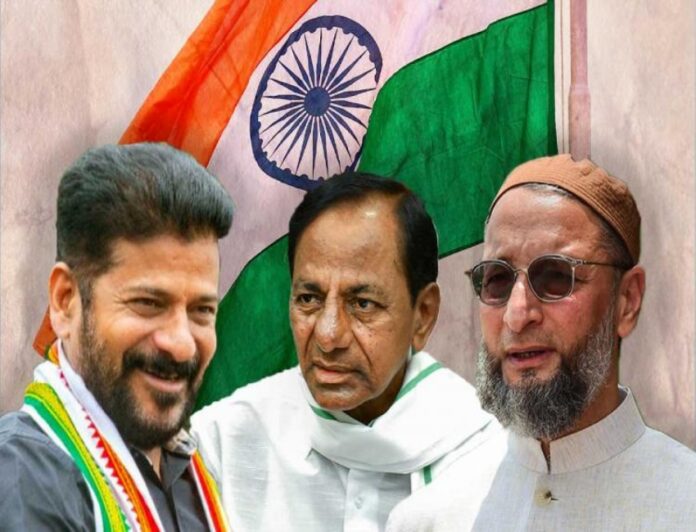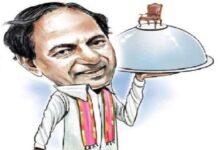It is too early to say whether KCR will pull off a hat-trick win amid discontent. There are a number of factors that will influence the outcome of the election, including the performance of the Telangana Rashtra Samithi (TRS) government in the last five years, the level of discontent among the people, and the strength of the opposition parties.
The TRS government has been credited with bringing about significant development in Telangana, including the construction of new infrastructure, the expansion of irrigation facilities, and the improvement of education and healthcare. However, there is also discontent among some sections of the population, particularly farmers and the poor. These groups are unhappy with the government’s policies, such as the land acquisition bill and the power tariff hike.
The opposition parties, led by the Congress, are trying to capitalize on the discontent and are promising to provide a better alternative to the TRS government. However, they are divided and lack a strong leader.
The anti-incumbency factor is inevitable for any ruler in a democracy like India, particularly when he, as the head of a regional party and the Chief Minister of a state, is going to face the third consecutive Assembly elections, regardless of his party’s populist programmes targeted at vote banks. A case in point is the future of Telangana Chief Minister K Chandrasekhar Rao. Today, many of the regional parties in India can influence politics at the national level to some extent. So, with the emergence of regional parties as significant, if not strong, political forces in various states, the era of coalition politics has begun in New Delhi.
The Bharata Rastra Samiti (BRS, previously called the Telangana Rastra Samiti -TRS), has been angling for a grip on national politics, having established itself firmly in Telangana. In fact, BRS has expanded its base even in Andhra Pradesh, though separate statehood for the Telangana region of undivided AP was founded on anti-Andhra sentiments.
There is notion in political circles that ‘Andhra businessmen’ have ‘plundered’ money from Telangana in all fields. The TRS benefited a lot from such talk that drove a wedge between the people of the two regions who had otherwise lived together harmoniously for nearly six decades after getting separated two centuries ago. The erstwhile AP was once part of the Golkonda Empire of the Qutb Shahi dynasty. During the period of Asaf Jahi rulers (Nizams), Telugu people got separated in 1800 with the Nizam rulers selling away ceded districts (now Rayalaseema) to the British rulers. After a long wait,
Telugu people realised their wishes with the formation of an integrated state for Telugu people. Thus, Andhra Pradesh state was formed by merging the Telangana region of the erstwhile Hyderabad state with the Andhra state that had been carved out of the composite Madras state on 1 November 1956. Over the years, there has been resentment among a section of the Telangana people over the merger, resulting in two spells of agitation for a separate state of Telangana, the latter one being spearheaded by K Chandrasekhar Rao (KCR, who took up cudgels for Telangana State initially as a disgruntled TDP leader, following his exclusion from the N Chandrababu Naidu cabinet).
Today, KCR, as the chief of BRS, is considered the moving spirit of Telangana. He is preparing earnestly to register a hat-trick win in the forthcoming Telangana Assembly elections. He has thrown his hat into the ring by declaring almost all the candidates of his party to gain an upper hand over his rivals.
Ultimately, the outcome of the election will depend on the choices made by the people of Telangana. If they are satisfied with the performance of the TRS government, they are likely to give it another term. However, if they are unhappy with the government, they may vote for the opposition.
It is also worth noting that the TRS has a strong base of support in Telangana, and it is difficult to see any other party winning a majority in the assembly. However, the TRS may not be able to win a hat-trick win if the opposition is able to unite and put up a strong fight.
The political scene in Telangana is hotting up, with the Bharatiya Janata Party determined to unseat KCR with the help of its clout at the Centre. The Congress’ resounding victory in the Karnataka Assembly elections has changed the poll dynamics in Telangana completely.
The success of AICC leader Rahul Gandhi’s Bharat Jodo Yatra, his disqualification from the membership of the Lok Sabha, and forced eviction from his official bungalow in New Delhi contributed much to the present situation in TS. BJP seems to be keen on preventing the Congress from replicating in TS the grand old party’s Karnataka success story. Hence, it is OK with extending hidden support to BRS.
Now KCR feels that his real strength lies in having on board BJP and the All India Majlis-e-Ittehadul Muslimeen (MIM). Despite being arch-rivals at the hustings, both these parties cannot help doing the needful to benefit, albeit for differing reasons.
During the elections held recently for the Assemblies in Maharashtra, Uttar Pradesh, and Bihar, MIM contested on its own, thus expanding its base at the national level. But MIM’s presence in the fray had worked against the interests of secular forces in those states, thereby helping BJP to have the last laugh at the hustings. But in TS, MIM must fight against BJP.
AIMIM might draw the battle lines on the religious angle and TRS may rake up regional feelings. Amidst all this, the Communist Parties have been only part of alliances mostly led by regional parties. The Congress has been compelled to be a junior partner in the alliances led by DMK or AIADMK in Tamil Nadu for nearly four decades.
Besides, then prime minister Manmohan Singh had to skip his official trip to Sri Lanka to participate in SAARC Summit due to brakes applied by the ruling coalition partner DMK from Tamil Nadu. The DMK had issued an ultimatum to Manmohan Singh that it would sever ties with the ruling UPA, should the latter attend SAARC Summit as Sri Lanka had been responsible for the plight of Tamils in the Island nation.
However, with the emergence of BJP as a ruling party at the Centre with absolute majority in the Lok Sabha, regional parties no longer have that kind of bargaining power. The BRS, with its nine seats in the Lok Sabha, has spent nearly Rs.250 crore on publicity in newspapers of all languages across the country to promote KCR as a leader at the national level.
KCR has focussed on his possible hat-trick win this time. At the same time, the Congress wants to capture TS at any cost with its growing confidence levels. KCR will be contesting from two seats – Gajwel and Kamareddy – this time. Folk singer and activist Gaddar (who died recently) was bandied about as KCR’s rival at Gajwel as an independent candidate with the support of the entire Opposition. His son could be the choice tomorrow. Actress Vijayasanthi (BJP) may be KCR’s opponent in Kamareddy.
All told, it may not be easy for KCR to pull off a hat-trick in the present situation.
Only time will tell whether KCR will be able to pull off a hat-trick win. The election is scheduled to be held in December 2023, and the campaign is expected to heat up in the coming months.■ #hydnews #khabarlive







